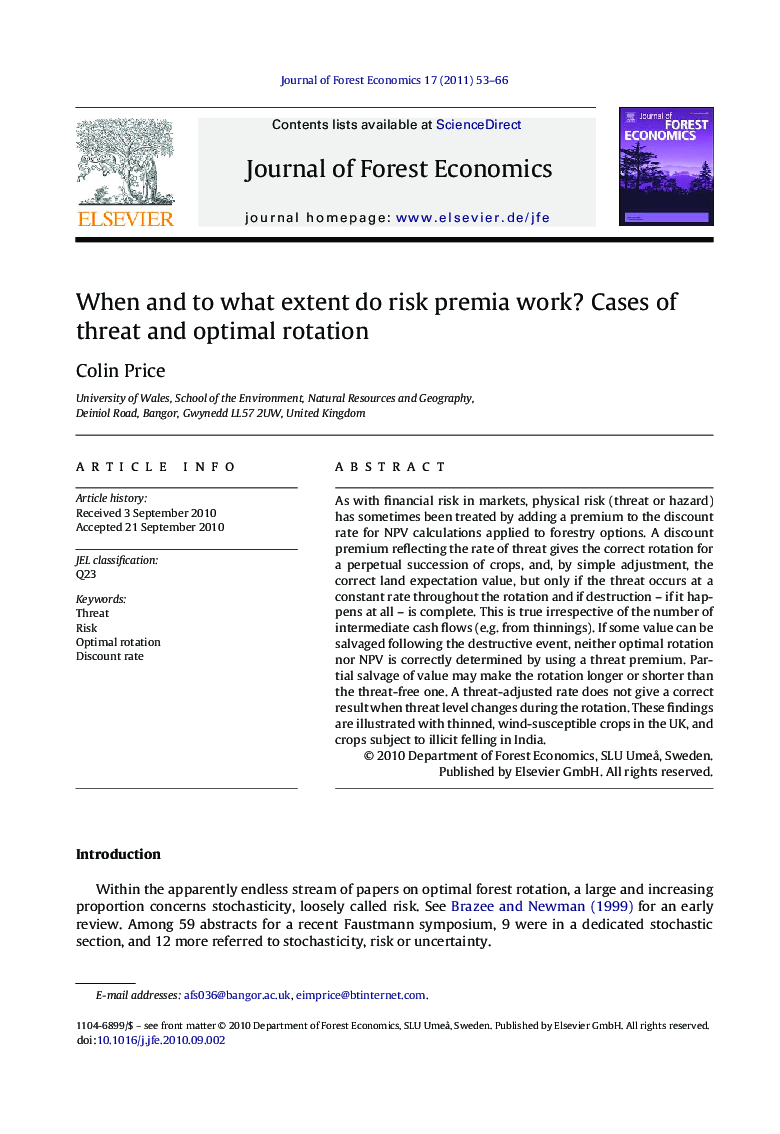| Article ID | Journal | Published Year | Pages | File Type |
|---|---|---|---|---|
| 92331 | Journal of Forest Economics | 2011 | 14 Pages |
As with financial risk in markets, physical risk (threat or hazard) has sometimes been treated by adding a premium to the discount rate for NPV calculations applied to forestry options. A discount premium reflecting the rate of threat gives the correct rotation for a perpetual succession of crops, and, by simple adjustment, the correct land expectation value, but only if the threat occurs at a constant rate throughout the rotation and if destruction – if it happens at all – is complete. This is true irrespective of the number of intermediate cash flows (e.g. from thinnings). If some value can be salvaged following the destructive event, neither optimal rotation nor NPV is correctly determined by using a threat premium. Partial salvage of value may make the rotation longer or shorter than the threat-free one. A threat-adjusted rate does not give a correct result when threat level changes during the rotation. These findings are illustrated with thinned, wind-susceptible crops in the UK, and crops subject to illicit felling in India.
